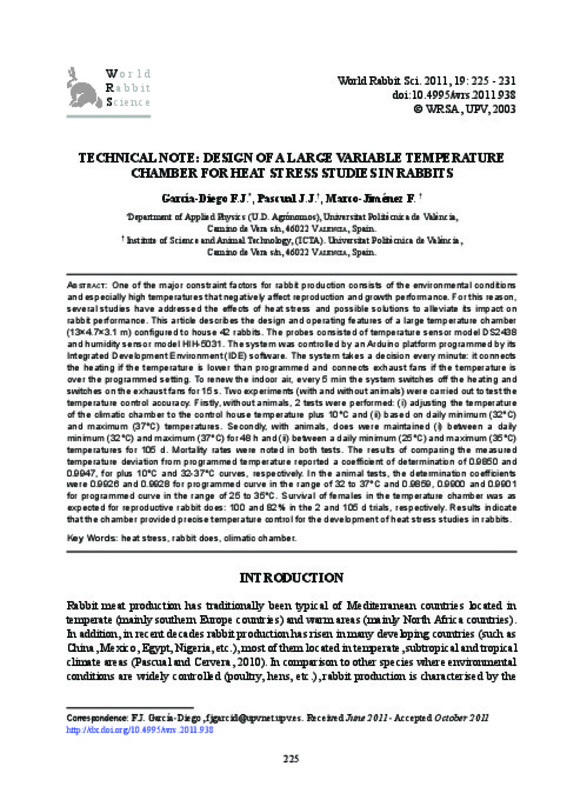JavaScript is disabled for your browser. Some features of this site may not work without it.
Buscar en RiuNet
Listar
Mi cuenta
Estadísticas
Ayuda RiuNet
Admin. UPV
Technical Note: Design of a large variable temperature chamber for heat stress studies in rabbits
Mostrar el registro completo del ítem
García Diego, FJ.; Pascual Amorós, JJ.; Marco Jiménez, F. (2011). Technical Note: Design of a large variable temperature chamber for heat stress studies in rabbits. World Rabbit Science. 19(4). https://doi.org/10.4995/wrs.2011.938
Por favor, use este identificador para citar o enlazar este ítem: http://hdl.handle.net/10251/14330
Ficheros en el ítem
Metadatos del ítem
| Título: | Technical Note: Design of a large variable temperature chamber for heat stress studies in rabbits | |
| Autor: | ||
| Entidad UPV: |
|
|
| Fecha difusión: |
|
|
| Resumen: |
[EN] One of the major constraint factors for rabbit production consists of the environmental conditions and especially high temperatures that negatively affect reproduction and growth performance. For this reason, several ...[+]
|
|
| Palabras clave: |
|
|
| Derechos de uso: | Reserva de todos los derechos | |
| Fuente: |
|
|
| DOI: |
|
|
| Editorial: |
|
|
| Versión del editor: | http://doi.org/10.4995/wrs.2011.938 | |
| Código del Proyecto: |
|
|
| Agradecimientos: |
|
|
| Tipo: |
|









